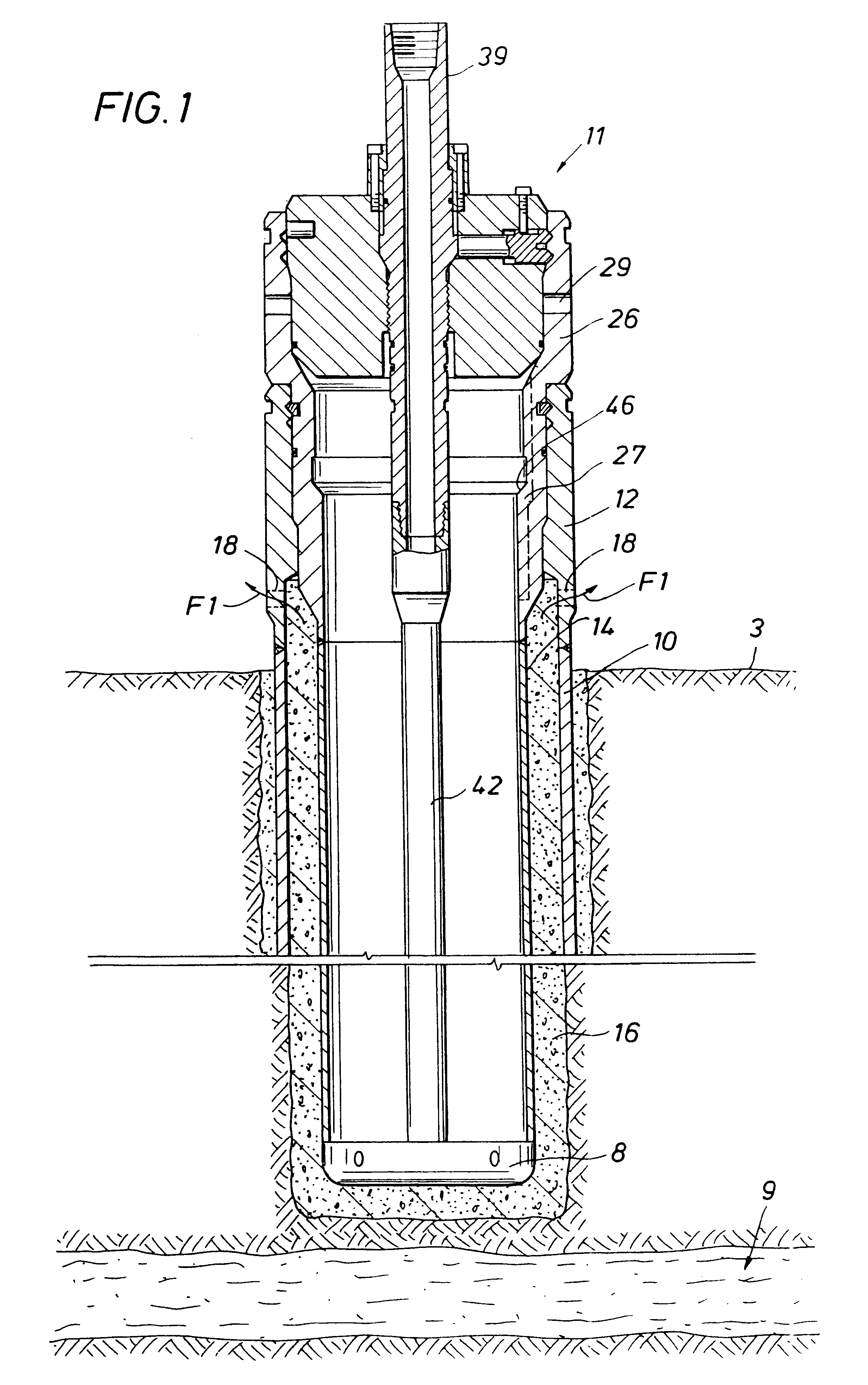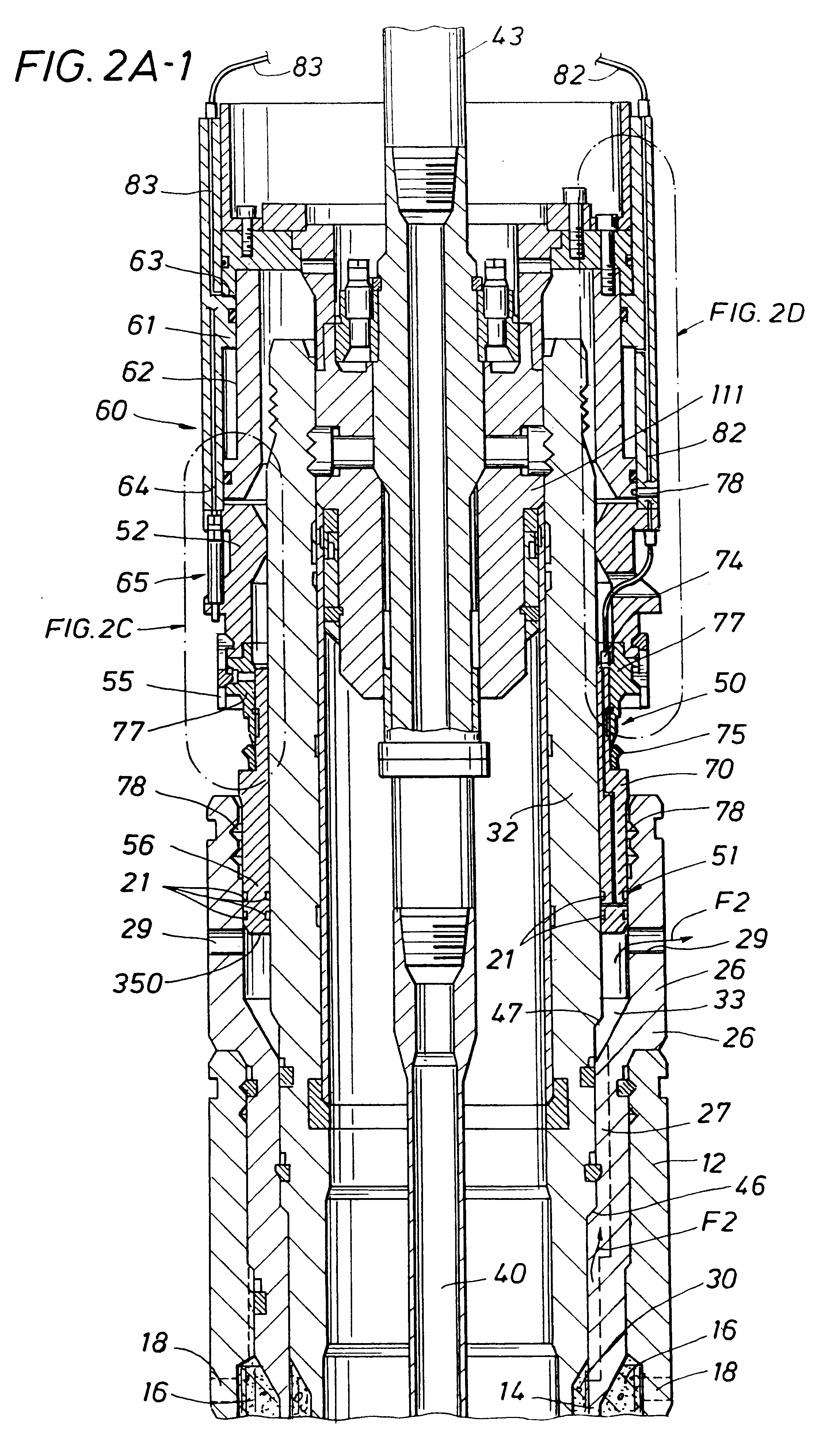Subsea wellhead system and method for drilling shallow water flow formations
a wellhead system and shallow water technology, applied in the field of subsea drilling, can solve the problems of time-consuming and expensive procedures, add to operating difficulties, and high cost of ball valves
- Summary
- Abstract
- Description
- Claims
- Application Information
AI Technical Summary
Benefits of technology
Problems solved by technology
Method used
Image
Examples
Embodiment Construction
FIG. 1 illustrates a subsea wellhead assembly with a 36" wellhead assembly 12 secured to the top of a 36" conductor pipe 10 which is positioned within a hole in the seal floor 3 and formed and secured in the hole in a conventional manner. A borehole has been reamed through the 36" conductor pipe 10 large enough to accept a 26" pipe 14. Such borehole terminates (as shown diagrammatically) above the known depth of shallow water flow zone 9.
A running and cementing tool 11 conveyed by a drill pipe string from a service vessel (not shown) is releasably secured to the 26" wellhead housing 26 which carries the 26" pipe 14 into the borehole. The drill pipe suing is connected to tool 11 at threaded coupling 39 (not shown). A cementing shoe 8 communicates with cementing apparatus at the surface vessel via the drill pipe string. A lower portion 42 of a conduit which connects from the drill sting is carried by running and cementing tool 11. Cement 16 is forced to flow at the bottom of the hole ...
PUM
 Login to View More
Login to View More Abstract
Description
Claims
Application Information
 Login to View More
Login to View More - R&D
- Intellectual Property
- Life Sciences
- Materials
- Tech Scout
- Unparalleled Data Quality
- Higher Quality Content
- 60% Fewer Hallucinations
Browse by: Latest US Patents, China's latest patents, Technical Efficacy Thesaurus, Application Domain, Technology Topic, Popular Technical Reports.
© 2025 PatSnap. All rights reserved.Legal|Privacy policy|Modern Slavery Act Transparency Statement|Sitemap|About US| Contact US: help@patsnap.com



